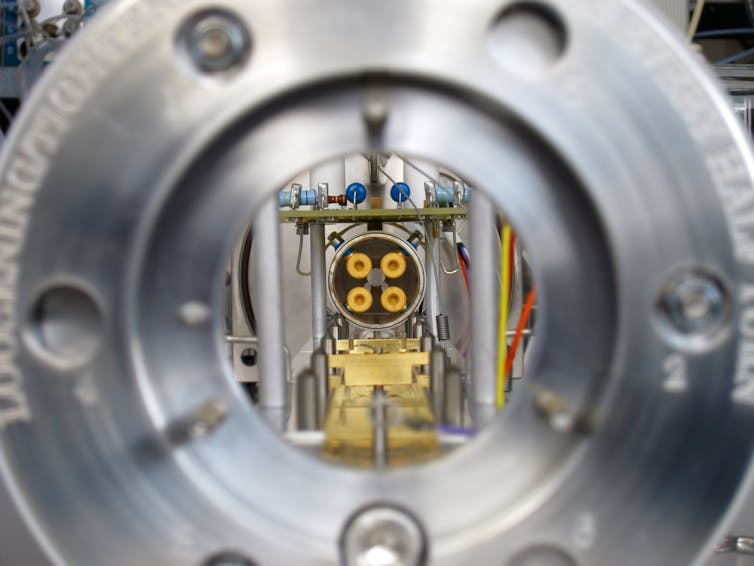Over 8,000 people were arrested in England and Wales for driving under the influence of drugs in the year to April 2016. In fact, 60% of all those stopped by police under suspicion of drug-driving test positive for illegal drugs including cocaine.
Yet the devices used to test for drugs at the roadside can give false positive readings, meaning someone could be arrested for drug-driving when they’re innocent. To combat this, my colleagues and I have developed a new portable system based on a technique called “mass spectrometry” that is much more reliable.
Current roadside testing for drugs is typically carried out by asking a driver to give a sample of saliva on a stick that looks very much like a pregnancy test. Testing for drugs is then carried out using something called an antibody assay.
The antibody molecule “recognises” a particular drug and binds to it, so that the device gives a positive signal if a drug is present. The problem is that in about 5% of cases, these devices give false positive results, because the antibody can bind to substances that are not the drug of abuse.

My colleagues and I have been developing new mass spectrometry approaches for drug detection in body fluids, through a collaboration with the Surrey and Borders NHS Foundation Trust and Advion Limited. Mass spectrometry is a technique that allows us to identify a molecule based on the ratio between its mass and its electrical charge. It is normally used to confirm the presence of drugs of abuse following a positive test at the roadside but has until now been restricted to the lab.
But developments in miniature portable mass spectrometers are gaining pace. In our recent work, published in Analytical Methods, we have demonstrated that you can use a new portable mass spectrometry system to test for cocaine in saliva. Not only is it small enough to be used at the roadside, but it is also about one tenth of the price of the lab-based systems that are used for confirmation testing.
Triple testing
The method looks for three different signals to confirm the presence of cocaine and the molecule it produces in the body, benzoylecgonine. First, we collect the saliva sample on an absorbent pad, drop some of it onto a surface and then pour a solution over it so it washes into a device called a chromatography column. Different molecules take different amounts of time to pass through a chromatography column, so we can measure them.
Next, we measure the mass of the molecule and finally, we smash up a portion of the molecule and measure the mass of its fragments. This gives us three points of identification so can be more confident of the identity of the detected substance than we can using an antibody test.
We have so far only tested the set-up on samples from a small number of patients and the next step is to establish what other drugs the device can detect, and test a greater number of real samples. We can also detect the drugs in urine, which may make the device useful in clinical settings. For example, in A&E departments it could show medical staff what drugs a patient has taken, without having to send samples to a lab.
The key breakthrough, however, is that the sensitivity of our set-up is good enough to detect cocaine use even at very low concentrations. So we expect to be able to catch as many drug users as with current devices, without the false positive results. Which could mean that innocent drivers are no longer caught up in unnecessary action and the police can focus their resources on stopping those who really are dangerous.

